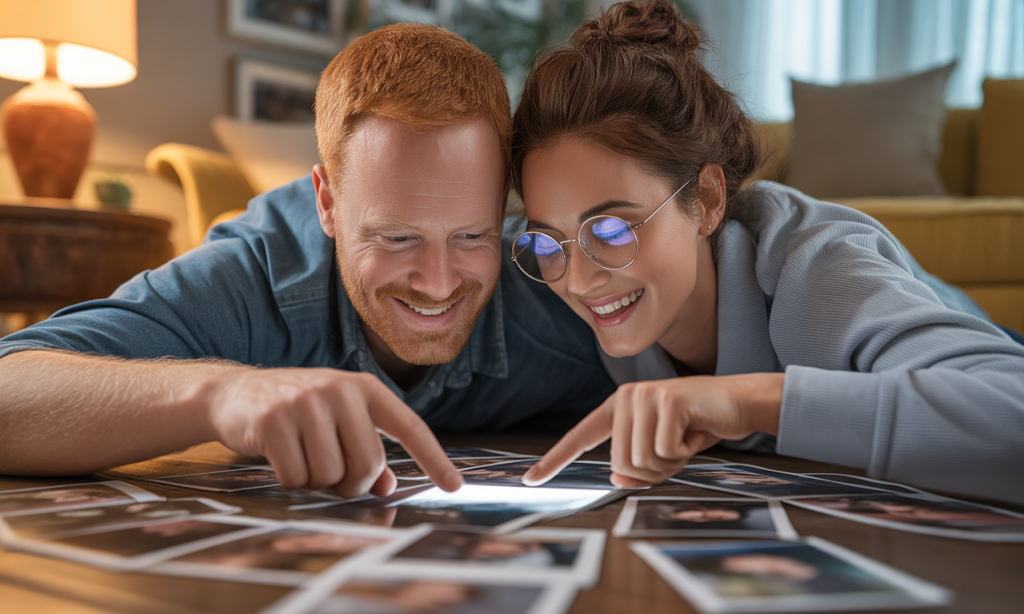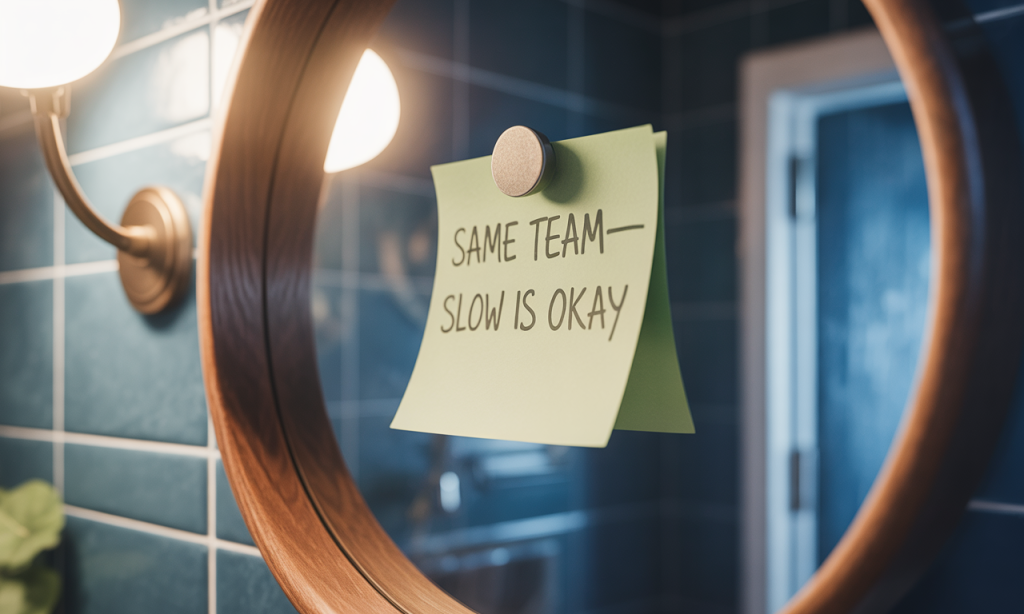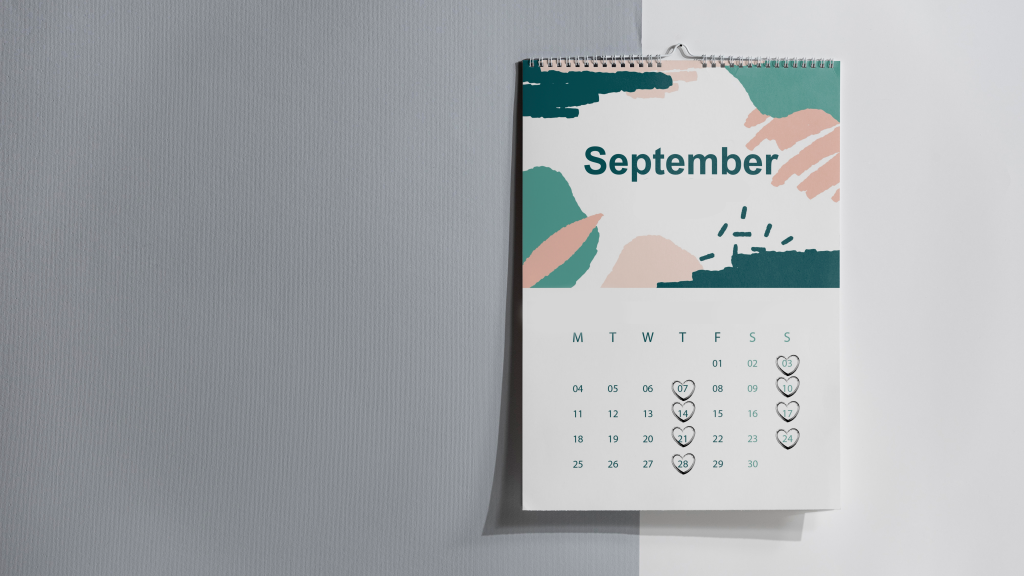When Hope Feels Impossible: Why Future-Visualization Backfires (and What Works Instead)

Sometimes “just picture a better future” makes you feel worse—because your brain can’t connect the dots from here to there. That’s not a failure; it’s biology. In this cornerstone, we’ll explain why future-visualization often backfires in stress and what to do instead: borrow confidence from your past. You’ll learn a three-step swap—Recall → Re-experience → Re-apply—so you use real memories as fuel for realistic next steps. Along the way, we’ll point you to simple tools (Memory Bank, Photo Rituals, Five-Minute Rewind, Origin Story, and more) that translate remembering into movement.
The Vision Gap: Why Future-Visualization Backfires When You’re Under Stress
 When life piles on—money pressure, a tense conversation, a kid crisis—well-meaning advice like “visualize your dream relationship” can sting. Why future-visualization backfires in those moments is simple: under acute stress, your nervous system narrows attention to immediate threats. Your brain swaps panoramic perspective for zoom-lens survival. Daydreams about “someday” feel fake because your body can’t believe what it can’t touch.
When life piles on—money pressure, a tense conversation, a kid crisis—well-meaning advice like “visualize your dream relationship” can sting. Why future-visualization backfires in those moments is simple: under acute stress, your nervous system narrows attention to immediate threats. Your brain swaps panoramic perspective for zoom-lens survival. Daydreams about “someday” feel fake because your body can’t believe what it can’t touch.
In other words, you’re not broken. You’re adaptive. The problem isn’t hope; it’s the method you’re using to get there. If imagining “better” spikes anxiety, switch methods: stop inventing a future you can’t feel and start borrowing from a past you already lived.
If you want a companion hub for this idea, our gentle framework “When You Can’t See a Way Forward: How Looking Back Rebuilds Hope” explains the remember → relive → restore rhythm that powers the swap you’ll learn here. In hard seasons, couples find it easier to take the first step with that piece at https://blog.liveyourbestmarriage.com/mindset/looking-back-to-move-forward.
Biology 101: How Stress Disables “Someday” Imagination
 Under pressure, your body routes power to fast-response systems. That’s helpful if a stove is on fire, unhelpful when your marriage just had a flare-up. Planning circuits dim; pattern-recognition favors threats. That’s why a well-intended “close your eyes and picture five years from now” can feel like climbing an invisible staircase.
Under pressure, your body routes power to fast-response systems. That’s helpful if a stove is on fire, unhelpful when your marriage just had a flare-up. Planning circuits dim; pattern-recognition favors threats. That’s why a well-intended “close your eyes and picture five years from now” can feel like climbing an invisible staircase.
The fix isn’t to try harder at future-visualization. The fix is to change inputs:
- Felt safety before big vision. Your brain believes what it feels, not what it thinks.
- Real evidence beats imagined outcomes. A 10-second clip of you two laughing last month carries more weight than an airbrushed fantasy of next summer.
- Micro-action follows emotion. Once your body tastes safety again, conversation softens and practical steps appear.
This is why we direct couples to small memory practices first—then revisit goals with steadier hearts. A practical way to begin is the Five-Minute Rewind, which pairs one photo with one feeling and one small action; if you need a ready-to-use guide, you can keep it bookmarked at https://blog.liveyourbestmarriage.com/micro-practices/five-minute-rewind.
The Three-Step Swap: Recall → Re-experience → Re-apply
 Here’s the method you’ll practice in this cornerstone. Think of it as changing the soil you plant hope in:
Here’s the method you’ll practice in this cornerstone. Think of it as changing the soil you plant hope in:
Recall
Surface a real moment where “we worked” (big or tiny): teamwork over a budget, praying through a scare, a long walk that ended in peace.
Re-experience
Don’t just think it—feel it. Watch the 10-second clip. Hold the ticket stub. Listen to the song. Tell the story with sensory detail until your breath slows.
Re-apply
Translate that feeling into one micro-action today: a two-minute hug, phone-face-down for dinner, a “same team” note on the fridge, or an apology with open posture.
That’s it. You didn’t conjure a future. You borrowed real warmth and let it power a real step. Repeat daily and you’ll notice: hope stops being a mood and becomes a muscle.
If you want templates and examples, Photo Rituals That Heal shows three simple ways to “re-experience” on autopilot—Throwback Thursday, Month-in-a-Minute, and Before Bed One Photo—at https://blog.liveyourbestmarriage.com/rituals/photo-rituals-that-heal.
Step 1—Recall: Stock Your “Us—Evidence” With a Memory Bank
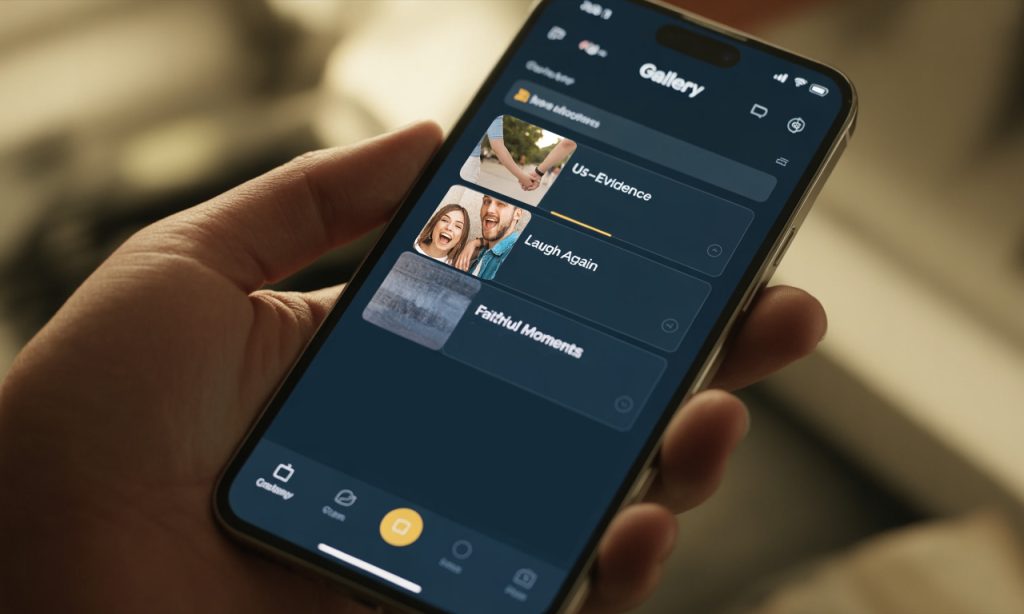 Recalling is easier when “proof” is organized. That’s why we teach couples to set up a Memory Bank—a living archive of small wins:
Recalling is easier when “proof” is organized. That’s why we teach couples to set up a Memory Bank—a living archive of small wins:
- A shared album labeled “Us—Evidence.”
- A pinned note titled “Receipts” with one-line gratitudes (“05/10—You made tea and waited up”).
- A 10-second clips folder for easy replays.
On good days you make deposits; on hard days you make withdrawals. Start yours in ten minutes with The Memory Bank: Saving Good Moments for the Days You Forget at https://blog.liveyourbestmarriage.com/habits/memory-bank-for-couples.
Step 2—Re-experience: Run Photo Rituals That Heal (in Under 10 Minutes)
 Re-experiencing means letting your body remember. Three rituals do the heavy lifting:
Re-experiencing means letting your body remember. Three rituals do the heavy lifting:
- Throwback Thursday Date Starter: One photo, three prompts (“Remember when… / We felt… / A tiny version we could redo this week is…”).
- Month-in-a-Minute: End each month with 30 photos/short clips; watch together.
- Before Bed One Photo: Each night, one image and the sentence “This reminds me we…”
All three lower defensiveness quickly, which is exactly why future-visualization backfires less after you do them. The full walkthrough lives at https://blog.liveyourbestmarriage.com/rituals/photo-rituals-that-heal.
Step 3—Re-apply: Use the Five-Minute Rewind to Turn Warmth Into Movement
 Re-apply is where change happens: see → say → do in five minutes.
Re-apply is where change happens: see → say → do in five minutes.
- See: Open one Memory Bank photo.
- Say: Name the feeling it gives you now (steady, playful, grateful, brave).
- Do: Express it in a micro-action (shoulder rub, phone-free dinner, “I hear you”).
This is the simplest way to prevent future-visualization from backfiring. You’re not waiting to feel inspired—you’re acting your way back to connection. Keep the step-by-step nearby at https://blog.liveyourbestmarriage.com/micro-practices/five-minute-rewind.
Your Origin Story: Stabilize Today With the Truth That Started You
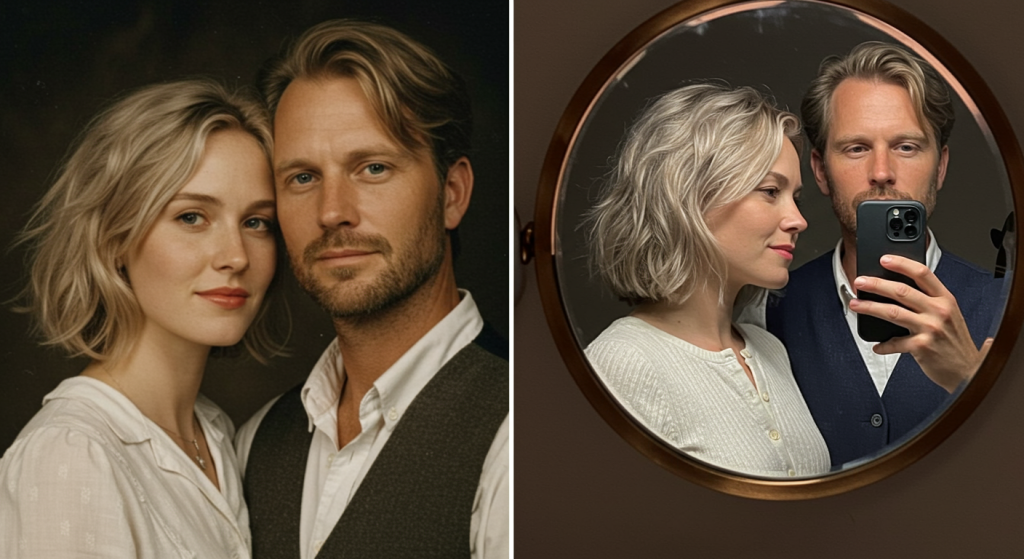 Every couple has an origin story—awkward texts, early sacrifice, that first laugh that wouldn’t quit. Those moments aren’t trivia; they’re anchors. Retelling them together calms the nervous system and restores identity: “We’re the people who chose loyalty/play/faith.”
Every couple has an origin story—awkward texts, early sacrifice, that first laugh that wouldn’t quit. Those moments aren’t trivia; they’re anchors. Retelling them together calms the nervous system and restores identity: “We’re the people who chose loyalty/play/faith.”
If future-visualization backfires, revisit who you already are. Use our two-minute “Why We Chose Us” refresher in From Friends to Forever: Using Your Origin Story to Stabilize Today at https://blog.liveyourbestmarriage.com/identity/origin-story-stabilizes-today.
Let Your Space Help: Anchor Objects That Cue Connection on Autopilot
 If your environment screams “busy,” let it whisper “beloved,” too. Place anchor objects from your story—first trip mug, wedding playlist printout, a goofy keychain—where your eyes already go (by the toothbrushes, next to the remote, on the fridge). These are silent reminders that borrow confidence from the past a dozen times a day.
If your environment screams “busy,” let it whisper “beloved,” too. Place anchor objects from your story—first trip mug, wedding playlist printout, a goofy keychain—where your eyes already go (by the toothbrushes, next to the remote, on the fridge). These are silent reminders that borrow confidence from the past a dozen times a day.
We lay out how to choose and place them in Anchor Objects: Little Things that Trigger Big Love at https://blog.liveyourbestmarriage.com/home/anchor-objects-trigger-love.
Case Study 1: Money Tension and the “Someday Budget” That Never Starts
 The backfire: One partner suggests visualizing “financial freedom,” the other rolls eyes because the card is due today. Conversation stalls.
The backfire: One partner suggests visualizing “financial freedom,” the other rolls eyes because the card is due today. Conversation stalls.
The swap:
- Recall: A photo from the month you paid off the car.
- Re-experience: Watch a 10-second clip from that week; name the feeling (“proud, scrappy, unified”).
- Re-apply: Pick one $20 decision tonight (cook at home) and one 10-minute money date tomorrow that starts with “What made us proud back then?”
Notice: you didn’t manifest a millionaire future. You replayed proof you already have grit—and used it to make one specific choice.
If you’d like to convert these wins into visible momentum, Build Momentum in Marriage: Small Metrics That Keep Love Moving shows how to track tiny actions—without turning love into homework—at https://blog.liveyourbestmarriage.com/momentum/build-momentum-small-metrics.
Case Study 2: Parenting Overwhelm and the Futile “Perfect Weekend” Vision
 The backfire: You picture a serene family Saturday; reality laughs (soccer, laundry, meltdowns). Hope dips.
The backfire: You picture a serene family Saturday; reality laughs (soccer, laundry, meltdowns). Hope dips.
The swap:
- Recall: A messy photo where everyone’s laughing with pancake batter on the stove.
- Re-experience: Talk about the smell of syrup, the playlist, the inside jokes.
- Re-apply: Recreate one sensory detail tomorrow: same playlist during cleanup, or pancakes for dinner in pajamas.
For practical, low-effort joy, Celebrate the Ordinary offers a 7-day audit that gently lifts home tone at https://blog.liveyourbestmarriage.com/habits/celebrate-the-ordinary
Case Study 3: Emotional Distance and the “Someday We’ll Feel Close” Picture
 The backfire: Future-visualization paints candlelight intimacy; your bodies feel like roommates. The gap hurts more.
The backfire: Future-visualization paints candlelight intimacy; your bodies feel like roommates. The gap hurts more.
The swap:
- Recall: A photo from a quiet walk when holding hands felt natural.
- Re-experience: Put on the same shoes/hoodie; step outside for five minutes.
- Re-apply: Hold hands for one city block—no big talk, just pace and breath.
If starting small feels safer, pair this with the Before Bed One Photo ritual from Photo Rituals That Heal so closeness returns in sips, not leaps.
When Future-Visualization Can Help (and How to Make It Safe)
 We’re not anti-vision. We’re pro-sequence. Big imagination works after safety returns. Here’s the order:
We’re not anti-vision. We’re pro-sequence. Big imagination works after safety returns. Here’s the order:
- Regulate with Recall/Re-experience (Five-Minute Rewind, Photo Rituals).
- Re-apply one micro-action.
- Then visioncast next week—not five years—with one specific picture you can act on in 24–72 hours.
This keeps future-visualization from backfiring because it’s now attached to felt safety and near-term movement. Later, you can expand the horizon as your bodies trust the process.
If you like designing repeatable supports for this, see Design Your Marriage Rhythms: The Rituals & Resets Handbook at https://blog.liveyourbestmarriage.com/rituals/design-your-marriage-rhythms.
Scripts You Can Use Tonight (Fast, Gentle, No Performances)
- After an argument:
“I don’t have perfect words. Can we do our Five-Minute Rewind with the photo from the day we fixed the flat tire? I want to borrow that teamwork.” - When money fear spikes:
“Before we plan big, can we scroll our Memory Bank for the week we paid off the car? Let’s make one $20 decision with that energy.” - When the house is loud:
“Let’s run a 60-second Throwback: one funny clip, one feeling, one tiny version tonight.” - When intimacy feels far:
“I miss holding hands. Walk around the block? No pressure to talk—just us.”
A 30-Day Cornerstone Plan to Install the Swap
- Do the Before Bed One Photo ritual each night.
- Add 7 receipts to your Memory Bank.
- One Five-Minute Rewind after any friction.
- Read the overview of photo rituals at https://blog.liveyourbestmarriage.com/rituals/photo-rituals-that-heal.
Week 2 — Recreate One Feeling Per Day
- Each morning: pick a Memory Bank photo, name a feeling, plan a micro-action to match.
- Install one anchor object in a daily path.
- If stress peaks, revisit this hub plus Five-Minute Rewind: https://blog.liveyourbestmarriage.com/micro-practices/five-minute-rewind.
Week 3 — Expand to Story & Rhythm
- Retell your origin story (two-minute “Why We Chose Us”).
- Build a Month-in-a-Minute slideshow for a quick gratitude hit.
- Add one weekly rhythm from Design Your Marriage Rhythms to stabilize (e.g., 10-minute check-in).
Week 4 — Calibrated Vision
- Now add safe future-visualization: one 72-hour picture with a clear next step (“Friday patio tea at 8pm”).
- Track tiny wins with Build Momentum in Marriage to keep energy visible: https://blog.liveyourbestmarriage.com/momentum/build-momentum-small-metrics.
- Close the month with Faithful Remembering if faith is your anchor: https://blog.liveyourbestmarriage.com/faith/faithful-remembering-in-marriage.
Faith Layer: Remember, Retell, Give Thanks
 Many traditions teach remembrance for a reason. Stacking “stones” of gratitude changes posture. During your Memory Bank review, add a one-line prayer: “God, thank You for this moment. Grow that same courage in us today.” You just turned a photo into worship—and worship into warmth.
Many traditions teach remembrance for a reason. Stacking “stones” of gratitude changes posture. During your Memory Bank review, add a one-line prayer: “God, thank You for this moment. Grow that same courage in us today.” You just turned a photo into worship—and worship into warmth.
If you’d like a gentle guide, Faithful Remembering: Spiritual Practices to Recall God’s Goodness in Marriage has simple prayers and a Sabbath slideshow idea at https://blog.liveyourbestmarriage.com/faith/faithful-remembering-in-marriage.
Measurement Without Pressure: Make Progress Visible
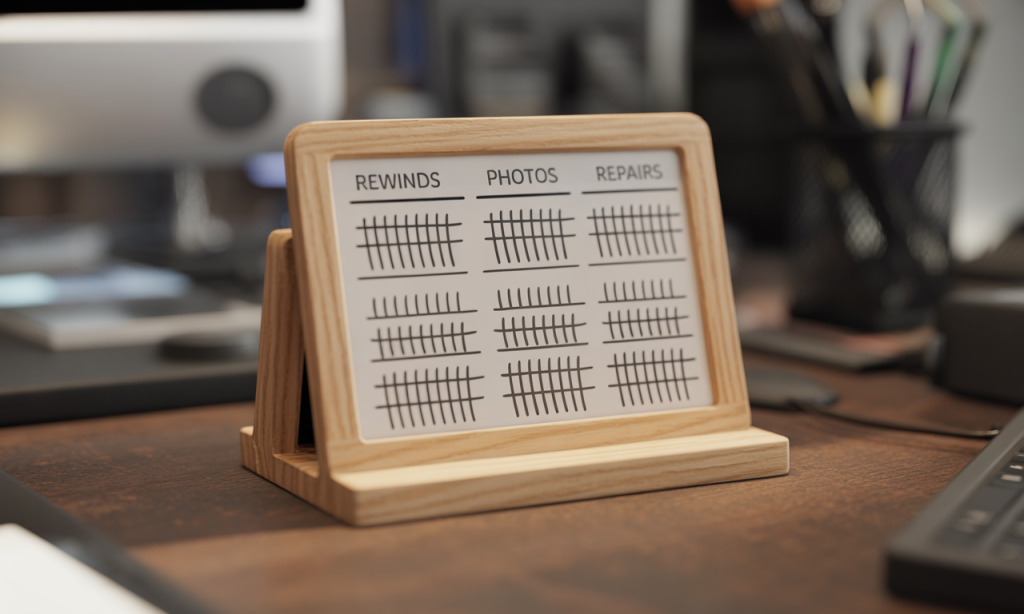 What you count becomes easier to continue. Instead of tallying “perfect weeks,” log what we call micro-metrics:
What you count becomes easier to continue. Instead of tallying “perfect weeks,” log what we call micro-metrics:
- Number of Five-Minute Rewinds this week
- Nights you did Before Bed One Photo
- One-line Receipts added
- Minutes of phone-free connection
- Repair speed after friction (time from argument to small gesture)
Use a tiny note or whiteboard. When you can see care piling up, the future feels less abstract, so future-visualization backfires less. A practical template sits inside Build Momentum in Marriage at https://blog.liveyourbestmarriage.com/momentum/build-momentum-small-metrics.
Frequently Asked Questions
 Are we avoiding goals by not visualizing the future right away?
Are we avoiding goals by not visualizing the future right away?
No. We’re sequencing goals after regulation. Once your body feels safe, planning works again.
What if our past is complicated?
Curate. Choose strengthening memories and skip seasons that sting. Use neutral cues (scenery, pets, food rituals) and consider support from a counselor if needed.
How often should we do this?
Daily in sips. Five-Minute Rewind after friction. Before Bed One Photo nightly. Month-in-a-Minute monthly.
Can we still dream big?
Yes—after Recall/Re-experience/Re-apply. Start with a 72-hour picture, then expand horizons.
What if one partner thinks this is cheesy?
Invite, don’t insist. Try one throwback clip and one small action. Let results—not convincing—do the persuading.
Bringing It Home: Hope Is a Muscle You Train
 When hope feels impossible, you don’t need louder pep talks or prettier Pinterest boards. You need evidence—and a way to feel that evidence again. That’s what this cornerstone is for. When future-visualization backfires, you’ll now know the swap:
When hope feels impossible, you don’t need louder pep talks or prettier Pinterest boards. You need evidence—and a way to feel that evidence again. That’s what this cornerstone is for. When future-visualization backfires, you’ll now know the swap:
- Recall a real moment that proves “we can.”
- Re-experience it until your body believes it.
- Re-apply it in one tiny action today.
Run that rhythm and your next step appears on its own. Do it again tomorrow. With each repetition, your marriage remembers itself.
If you want the gentlest place to begin tonight, open your Memory Bank and pick one photo. Name one feeling. Do one small act that fits. That’s how couples who are tired, busy, or discouraged still move forward—not by imagining a perfect future, but by carrying yesterday’s warmth into today’s choices.

